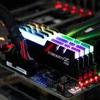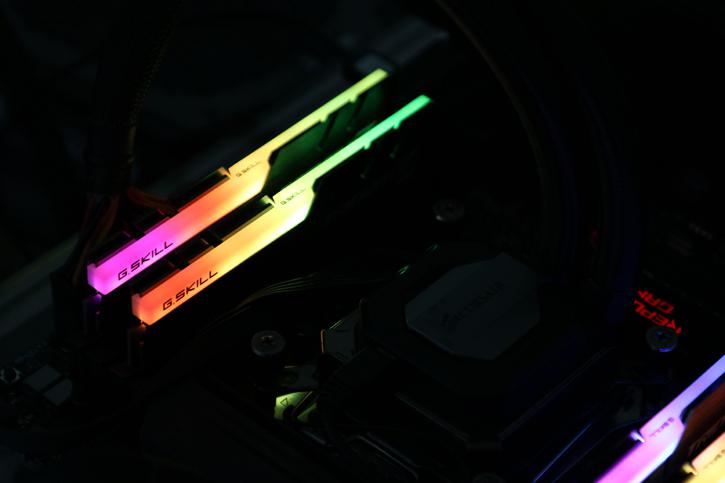Specifications and Features
Trident Z RGB F4-3600C16Q-32GTZR (4x8GB)
So the memory kit tested today comes from that G.Skill TridentZ series armed with the very best ICs all packed nicely under heat spreader design of the DIMM module. First things first, this kit is specifically optimized for 6th and 7th Gen Intel Core processors (Skylake/Kaby-Lake) and the Z170/Z270 chipset.
- Trident Z is the latest high-performance DDR4 range from G.Skill, designed for gaming and overclocking
- Optimized for the latest 6th/7th Generation Intel Core Processors and Z170/Z270 chipsets
- Four matched 8GB modules, designed for use in a quad channel setup
- 3600MHz memory speed with full memory timings of CL16-16-16-36 at 1.35V
- Two-colour heatsinks with a new fin design for more effective heat dissipation
- RGB LED heatspreader that is configurable in color and animations
The flagship of the TridentZ series actually clocks in at a rate of 4266 MHz, we'll do just fine with the 3600 MHz CL16 kit though, as well as memory voltage of 1.35 volts for that frequency. According to G.Skill the modules achieve a bandwidth of up to 28.8 GB per second, which we'll try to confirm.
| Series | Trident Z |
| Memory Type | DDR4 |
| Capacity | 32GB (8GBx4) |
| Multi-Channel | Dual/Quad Channel Kit |
| Tested Speed | 3600MHz |
| Tested Latency | 16-16-16-36-2N |
| Tested Voltage | 1.35v |
| Registered/Unbuffered | Unbuffered |
| Error Checking | Non-ECC |
| SPD Speed | 2133MHz |
| SPD Voltage nominal | 1.20v |
| Fan lncluded | No |
| Height | 44 mm / 1.73 inch |
| Warranty | Limited Lifetime |
| Features | Intel XMP 2.0 (Extreme Memory Profile) Ready |
DDR4 entry-level SKUs are clocked at 2133 MHz, but often with better access times and 2133 MHz runs at stock 1.2 Volts which is also a tad lower. Pricing wise you can spot this 32GB kit for € 376,- but the 3000 MHz 32GB kit sells at € 276,50. That is 32GB thus four 8GB DIMMs. Keep in mind that a TridentZ RGB 2400 MHz 16GB kit is just € 144, which is 9 euros per GB. With an industry average of roughly 8 euros per GB we feel that price is fair. All modules are equipped with the new style heat-spreader that holds with Thermal Conductive Technology and the RGB LED strip. The memory chips have contact with the heat sink in order to ensure that both memory and the board operate at the same temperature and can thus provide the best performance. Once installed in the BIOS if supported, select the XMP profile for the memory and after a reboot you are good to go -- really it's that simple. If you do not have an XMP profile option in your BIOS, set the timings manually and set DIMM voltage a little higher to 1.35v opposed to an SPD 2133 MHZ config with 1.2 Volts.
But head on over to the next page where we'll startup a product photo-shoot after which this article will dive into a benchmark session. Hey, we know you like it like it.


